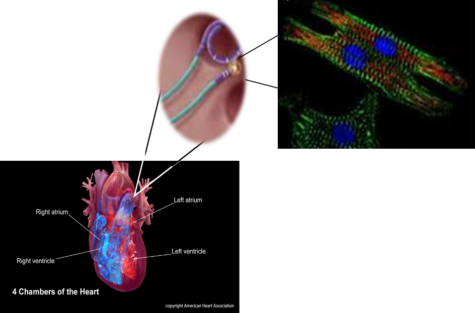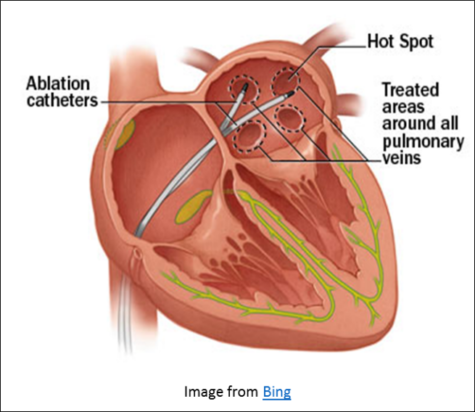Deciphering the CABANA trial and what if anything do the results mean to the management of atrial fibrillation?
“The truth is rarely pure and never simple.”
Oscar Wilde
“Facts do not cease to exist because they are ignored.”
Aldous Huxley
As is apparent from my previous blogs, I am very passionate about atrial fibrillation (AF). Undoubtedly, the most common arrhythmia nationally, and likely worldwide, can cause disabling symptoms, lead to a stroke and exacerbate heart failure. In my experience, patients with AF can be categorized as either asymptomatic, or highly affected. Essentially the former are unaware of their diagnosis, and are often found to have AF by serendipity. Life is in fact very easy for them, as well as their clinicians: anticoagulate, rate control and move on.
Now, for those who are symptomatic, there exist management challenges. AF is classified as paroxysmal, which is an intermittent or periodic form of arrhythmia; persistent, which is a sustained form and generally felt to be a progressed state of AF; or permanent, where no interventions are done. There is a paucity of available antiarrhythmic agents to treat and suppress AF. Antiarrhythmic drugs have earned a reputation of not being very effective while causing significant systemic adverse effects. Clinicians who care for symptomatic AF patients have certainly observed them to often experience shortness of breath, chest discomfort, loss of stamina, sensation of tachycardia and in some cases heart failure. Not uncommonly, these symptoms lead to anxiety as well as a compromised quality of life. In short, these patients must be treated.
Over the last decade, the techniques employed to treat AF by catheter-based means have improved in efficacy, even for more advanced forms of persistent AF. Although far from ideal, a number of studies have demonstrated ablation methods (e.g. radiofrequency, referred to colloquially as “heat” or cryoablation, “freezing”) to be superior to attempts at drug suppression. This is no surprise, as ablation addresses the problem directly (e.g. preventing AF from initiating) by calculated tissue destruction. While repeat studies are sometimes needed, the improvement in quality of life and improvement in heart failure class (such as observed with CASTLE-AF, AATAC) are known benefits1,2.
CABANA (Catheter Ablation vs Antiarrhythmic Drug Therapy for Atrial Fibrillation Trial) sought to determine whether AF ablation versus antiarrhythmic drug therapy could prevent a composite endpoint of total mortality, disabling stroke, serious bleeding, or cardiac arrest1. This was a large randomized study with over 2,000 patients. The results, which were presented at the annual Heart Rhythm Society last month, yielded a rather disappointing result: ablation was not superior to drugs for preventing the above composite endpoint2. That’s a rather dubious final score.
In spite of acknowledging what Wilde and Huxley might say, I would like to reconcile several of CABANA’s limitations:
– Personally, I have a grievance with the use of a “composite score” in the above scenario; stroke and “serious bleeding” are in no way equivalent; mechanistically, how would the investigators theorize that ablation could prevent a cardiac arrest?
– Death, while inevitable is indeed a categorical variable, one is either alive or not. Given that the causes of death are innumerable, it does not seem appropriate to consider that ablation could prevent all causes of death. Rather than try to postulate that ablation, or a potpourri of antiarrhythmics could stave of death, a more appropriate measure would be to ascertain prevention of death from heart failure.
– Approximately 25% of patients assigned to drug therapy crossed to ablation. Notably, some sources cited difficulty in enrollment as patients and referring physicians likely felt that ablation would be more beneficial.
– The ablation techniques used, as were the drugs prescribed, were left to the discretion of the treating physicians. Hence, the methods employed were not uniform, and paroxysmal AF cases were pooled with more advanced forms of persistent AF.
– How about continued drug therapy after ablation? The POWDER-AF investigators were able to show less AF burden with continued antiarrhythmic support following AF ablation. This should be expanded upon with larger studies.
From my perspective, I do not believe that CABANA results will affect my practice. Many of us will be curious to see publications regarding future subanalysis. In my opinion, patients who are very symptomatic with AF and have not responded to antiarrhythmics should be treated with AF ablation, and especially those who have developed cardiomyopathy or worsened heart failure as a result of AF6.
References
- http://circ.ahajournals.org/content/early/2016/03/30/CIRCULATIONAHA.115.019406
- https://www.nejm.org/doi/full/10.1056/NEJMoa1707855
- https://clinicaltrials.gov/ct2/show/NCT00911508
- https://www.nhlbi.nih.gov/news/2018/atrial-fibrillation-catheter-ablation-or-drug-therapy-results-are
- Duytschaever M, Demolder A, Phlips T, Sarkozy A, El Haddad M, Taghji P, Knecht S, Tavernier R, Vandekerckhove Y, De Potter T. Pulmonary vein isolation With vs. without continued antiarrhythmic Drug treatment in subjects with Recurrent Atrial Fibrillation (POWDER AF): results from a multicentre randomized trial. Eur Heart J. 2018;39:1429-1437
- https://www.hrsonline.org/Policy-Payment/Clinical-Guidelines-Documents/2017-HRS-EHRA-E CAS-APHRS-SOLAECE-Expert-Consensus-Statement-on-Catheter-and-Surgical-Ablation-of-Atrial-Fibrillation

Christian Perzanowski is an electrophysiologist in Tampa, FL. His main interests are in ablation techniques for atrial fibrillation and device therapy for congestive heart failure. He reports no conflicts of interests.

Tampa, FL (8/17 CP)
 I was in the mall one day and the saleswoman started talking about her health issues. For starters, I am not sure why she entrusted me with this information, but okay. So why is that conversation interesting enough to write about? Well, the lady was 20 years of age and she had undergone several cardiovascular challenges, including a cardiac ablation. I had heard of other people having this procedure done but I had not thought much about it (I looked it up but not in much detail), until I met this young lady. So, I started wondering:
I was in the mall one day and the saleswoman started talking about her health issues. For starters, I am not sure why she entrusted me with this information, but okay. So why is that conversation interesting enough to write about? Well, the lady was 20 years of age and she had undergone several cardiovascular challenges, including a cardiac ablation. I had heard of other people having this procedure done but I had not thought much about it (I looked it up but not in much detail), until I met this young lady. So, I started wondering: The normal mammalian heart is composed of tight layers of myocytes that are separated by small clefts creating a matrix network. The cardiac matrix network is divided into three constituents. The matrix network is collagen-based and serves as a scaffold for various components of the cell as well as transmission of contractive forces that keep the cells in correct timing with neighboring cells. When the heart undergoes damage, the resulting fibrosis disrupts the coordination of this myocardial excitation-contraction leading to hypertension. Subsequently, loss of collagen impair transduction, which causes the uncoordinated contraction of the cardiac muscle bundles (the quivering or fluttering that is felt with AF) or generation of re-entry circuits (irregular heartbeat).
The normal mammalian heart is composed of tight layers of myocytes that are separated by small clefts creating a matrix network. The cardiac matrix network is divided into three constituents. The matrix network is collagen-based and serves as a scaffold for various components of the cell as well as transmission of contractive forces that keep the cells in correct timing with neighboring cells. When the heart undergoes damage, the resulting fibrosis disrupts the coordination of this myocardial excitation-contraction leading to hypertension. Subsequently, loss of collagen impair transduction, which causes the uncoordinated contraction of the cardiac muscle bundles (the quivering or fluttering that is felt with AF) or generation of re-entry circuits (irregular heartbeat).